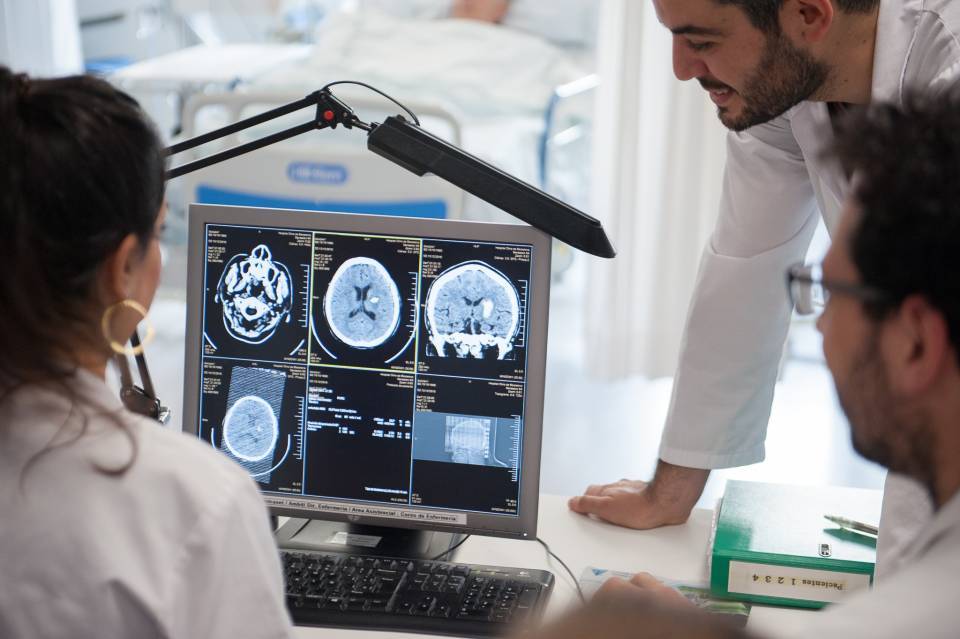In the past 5 years, there has been great progress in treating stroke using vascular neurology. For example, the benefits of mechanical thrombectomy have been demonstrated in patients with ischemic stroke. This technique consists of extracting the clot that causes the stroke using mechanical means such as a catheter. Furthermore, it has been observed that the technique works even in cases where the first symptoms of stroke appeared 24 hours ago.
Even so, less than half of the patients treated for stroke are able to recover well enough to live independently in their day-to-day lives. This significant limitation means that finding other treatments is essential. It is not enough to simply return blood supply to the cerebral tissue. The brain cells must also be protected from the consequences of a lack of oxygen. To achieve this objective, drugs have been researched that may protect the brain tissue known as the ischemic penumbra, which is the part of the brain affected by a lack of oxygen. During the first hours after a stroke, the activity of the cells in this tissue is interrupted, but at this point irreversible changes such as cell death have not occurred. Thanks to the development of the mechanical thrombectomy technique, which allows the clot to be removed from the blocked artery, it can now be guaranteed that drugs that protect cerebral tissue affected by a lack of oxygen will reach the area where they are needed.
Recently, two major clinical trials on neuroprotective drugs achieved very encouraging results. On the one hand, the URICOICTUS study was carried out, in which uric acid, one of the most powerful antioxidants in humans, was administered. It demonstrated notable efficacy in different groups of stroke patients: patients with hyperglycaemia at the start of ictus, patients who received mechanical thrombectomy and women. It is these groups that tend to have the greatest oxidative stress, meaning it is they who most benefit from antioxidants.
On the other hand, the ESCAPE NA-1 study was carried out, in which administration of the drug Nerinetide showed better clinical outcomes, lower size of cerebral infarction and lower mortality in patients treated with mechanical thrombectomy. Furthermore, there is no need to administer thrombolytic drugs in advance to break down the clot.
For several years, the Cerebral Vascular Disease Functional Unit at Hospital Clínic (UFPVC) has been making great efforts to make the administration of uric acid to stroke patients possible. The creation of FreeOX Biotech, a spin-off company, successfully reached phase 2B of a clinical trial (one of the most advanced stages) on uric acid as a drug. Furthermore, in the USA a patent has been developed to use this treatment along with thrombectomy, which has obtained a positive preliminary assessment from the European Medicines Agency.
The current challenge at the Cerebral Vascular Disease Unit is obtaining the resources necessary to carry out a study to confirm these results. The pandemic has complicated the achievement of this objective, as it adds an extra obstacle when identifying, producing and being able to administer this treatment.
Authors: Dr Arturo Renú and Dr Ángel Chamorro, Neurologists at the Cerebral Vascular Disease Functional Unit at Hospital Clínic.




